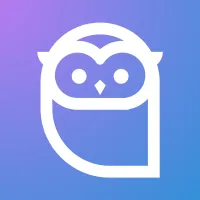All Blog Posts
Stay up to date on the latest platform updates, new use cases and strategies that are working for other agencies.

Designing AI Agents for Scheduling Appointments with Stammer.ai
Managing appointments can be a challenging task for any business. From coordinating schedules to sending reminders, it eats up valuable time and resources. That's where AI agents come into play. An AI agent specialized in scheduling can help streamline this process, making it more efficient for both you and your clients.
Imagine having an assistant that works 24/7, handling appointments without any errors. This not only saves time but also ensures that your appointments are managed efficiently. Clients get their preferred slots without having to wait, and you can focus on more important tasks. Plus, AI agents can handle multiple scheduling requests simultaneously, something a human assistant would find impossible.
Using Stammer.ai, you can easily build an AI agent tailored for scheduling appointments. You don't need to be a tech whiz to make it happen. With simple steps and intuitive tools, you can create a smart, reliable AI scheduler. In this article, we will explore the benefits of AI for scheduling, the essential features your AI should have, and offer a step-by-step guide to help you get started.
Advantages of Using AI for Scheduling Appointments
Using AI for scheduling appointments offers several benefits. One major advantage is saving time. An AI scheduler can quickly find open slots and book appointments without human intervention. This allows you and your team to focus on more important tasks.
AI schedulers also reduce the chances of errors. Manual scheduling often leads to double-bookings or missed appointments. An AI system can manage calendars accurately, ensuring appointments are booked correctly and reminders are sent out on time. This leads to fewer scheduling mishaps and happier clients.
Another benefit is 24/7 availability. While human schedulers need breaks and have working hours, an AI scheduler can operate all day and night. This means clients can book appointments whenever it's convenient for them, even after business hours. This flexibility can improve customer satisfaction and make your services more accessible.
Must-Have Features for Appointment Scheduling AI
For an AI scheduler to be effective, it should include several key features. Here's a list of must-haves for your appointment scheduling AI:
1. Calendar Integration: The AI scheduler should sync with popular calendar platforms like Google Calendar and Outlook. This ensures it has real-time access to available time slots and can seamlessly update the calendar with new appointments.
2. Natural Language Processing (NLP): With NLP, the AI can understand and respond to different ways people request appointments. This makes it easier for users to interact with the scheduler in a way that feels natural.
3. Automated Reminders: Sending out reminders via email or text message reduces no-shows and keeps clients informed about their upcoming appointments.
4. Customization Options: Being able to customize the booking system to reflect your brand's look and feel can create a more cohesive experience for clients.
5. Multi-Channel Support: The AI scheduler should handle appointment requests from various platforms, whether it's your website, social media, or email. This provides clients with multiple ways to book an appointment.
6. Reporting and Analytics: Access to data on booked appointments, cancellations, and client interactions can help you understand trends and make informed decisions to improve services.
7. User-Friendly Interface: A straightforward and intuitive interface ensures clients and staff can use the scheduler without confusion, preventing frustration and enhancing the overall experience.
These features ensure that your AI scheduler is not only efficient but also user-friendly and aligned with your business needs.
Detailed Steps to Create an Appointment Scheduling AI with Stammer.ai
Building an appointment scheduling AI using Stammer.ai is a straightforward process. Here's how you can set it up:
1. Create an Account and Log In: Start by creating an account on Stammer.ai if you don't already have one. Log in to access your dashboard.
2. Choose a Template: Stammer.ai offers various templates for different AI use cases. Select the one that matches appointment scheduling.
3. Define the AI's Role: Clearly outline what your AI should do. Identify which kind of appointments it will schedule and any specific criteria it needs to consider.
4. Integrate Calendars: Connect Stammer.ai to your preferred calendar systems like Google Calendar or Outlook. This ensures your AI has real-time access to available slots.
5. Write Prompts and Responses: Add prompts that guide users through the appointment scheduling process. Use natural language to make interactions feel more conversational.
6. Set Up Automated Reminders: Configure the AI to send automated appointment reminders. This can be done through email or text, keeping clients informed about their bookings.
7. Customize the Interface: Adjust the appearance of your AI scheduler to match your brand's colors, logos, and overall style.
8. Test Your AI Scheduler: Run tests to ensure the AI handles scheduling properly and responds to queries effectively. Make any necessary adjustments.
9. Deploy and Monitor: Once everything is set, deploy your AI scheduler on your website or other platforms. Keep an eye on its performance through Stammer.ai's analytics tools.
Best Practices for Optimizing and Customizing Your AI Scheduler
Optimizing and customizing your AI scheduler ensures it runs smoothly and meets your clients' needs. Here are some best practices:
1. Regular Updates: Frequently review and update the AI's vocabulary and responses. This keeps it relevant and capable of handling new types of queries.
2. Client Feedback: Implement a feedback system where clients can rate their scheduling experience. Use this information to make continuous improvements.
3. Analytics Monitoring: Use analytics to track the AI's performance. Pay attention to key metrics like the number of booked appointments, no-shows, and user satisfaction.
4. Personalization: Customize the AI to make interactions more personalized. Use client names in communications and remember past appointment history to offer a more tailored experience.
5. Error Handling: Ensure the AI can recognize and handle errors or unusual requests. Provide clear instructions or routes to human intervention when needed.
6. Mobile Optimization: Make sure your AI scheduler works well on mobile devices. Many clients prefer booking appointments on the go, so a mobile-friendly interface is critical.
7. Consistent Branding: Align the AI's tone and appearance with your brand. Consistent branding builds trust and makes the scheduling process feel cohesive.
8. Security Measures: Protect client data by implementing strong security measures. Ensure your AI complies with data privacy regulations to keep client information safe.
Conclusion
Building and optimizing an appointment scheduling AI with Stammer.ai can significantly benefit your business. It streamlines the scheduling process, enhances accuracy, and offers 24/7 availability. By incorporating essential features and following best practices, you ensure that your AI scheduler is both effective and user-friendly.
Using Stammer.ai makes it easy to create, deploy, and manage your AI solutions. Whether you're an agency owner or an entrepreneur, an AI scheduler can take your client services to the next level. It allows you to focus on growing your business while offering a seamless appointment booking experience.
Ready to simplify your AI appointment scheduling? Get started with Stammer.ai today and see how an AI scheduler can transform your business!





